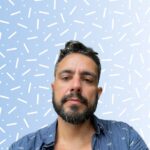IEEE International Symposium on Biomedical Imaging ISBI, 2008
Accurate computational localization of single fluorescent particles is of interest to many biophysical studies and underlies recent approaches to high resolution microscopy using photo-switchable fluorophores. The position of individual particles is typically computed by least-squares fitting of aGaussian intensity profile to the image, whose band-width is either derived from an idealized theoretical model of the point spread function (PSF), or itself fitted to the image. However, the band-width best approximating the actual PSF may differ significantly from its theoretical value, while fitting it is expected to degrade localization accuracy. Here, instead, we measure the real PSF bandwidth using fluorescent beads as calibration probes, and use this new bandwidth in a Gaussian model fitting algorithm. We show on simulated and real images that this simple modification of the standardlocalization procedure results in significant improvement of the 3D accuracy in the nanometer range.



